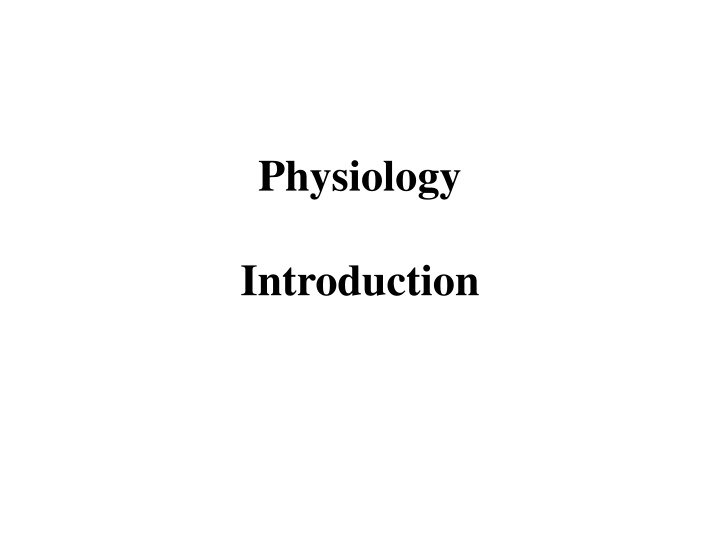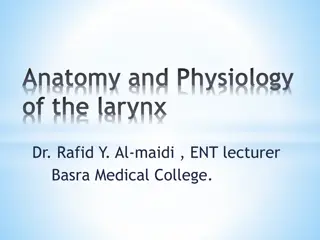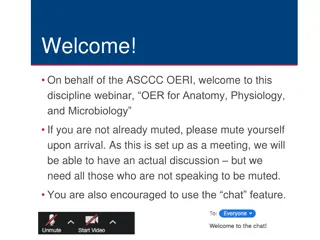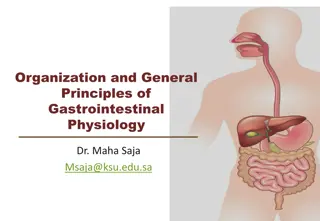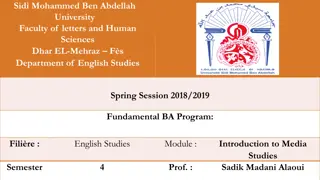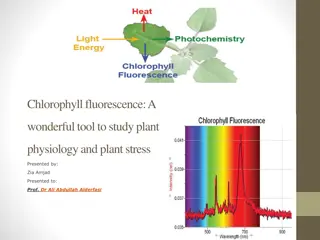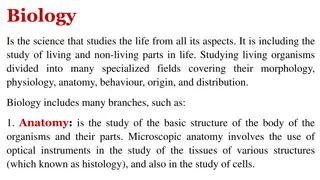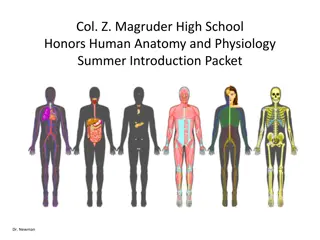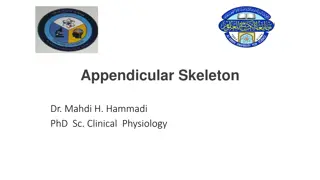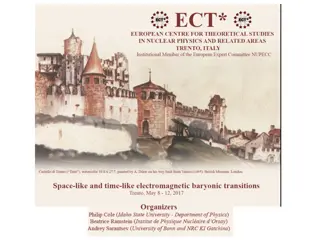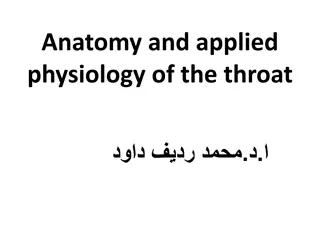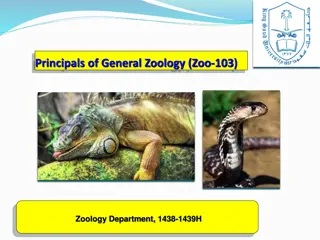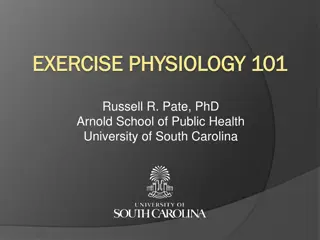An Overview of Physiology Studies
Physiology delves into normal functions within living creatures, encompassing cell physiology, systems physiology, evolutionary physiology, defense physiology, exercise physiology, and the intricate balance of body fluids and electrolytes. It explores how body parts work and interrelate, emphasizing the role of water compartments and the processes of filtration and osmosis in maintaining bodily equilibrium.
Download Presentation

Please find below an Image/Link to download the presentation.
The content on the website is provided AS IS for your information and personal use only. It may not be sold, licensed, or shared on other websites without obtaining consent from the author.If you encounter any issues during the download, it is possible that the publisher has removed the file from their server.
You are allowed to download the files provided on this website for personal or commercial use, subject to the condition that they are used lawfully. All files are the property of their respective owners.
The content on the website is provided AS IS for your information and personal use only. It may not be sold, licensed, or shared on other websites without obtaining consent from the author.
E N D
Presentation Transcript
Physiology Introduction
Physiology Definition: Physiology is the study of normal function within living creatures. Branches of physiology Cell physiology - studying the way cells work and interact.
Systems physiology - this focuses on the computational and mathematical modeling of complex biological systems. Evolutionary physiology - studying the way systems, or parts of systems, have adapted and changed over multiple generations.
Defense physiology - changes that occur as a reaction to a potential threat, such as preparation for the fight-or-flight response. Exercise physiology - is the study of the physiology of physical exercise. Difference between Physiology and anatomy Anatomy is closely related to physiology. Anatomy refers to the study of the structure of body parts, but physiology focuses on how these parts work and relate to each other.
Body fluids and electrolytes People are watery creatures. More precisely, we are salt-watery creatures, though not as salty as the oceans. Water, the fluid medium of the human body, makes up55% to 75% of the total body weight. Electrolytes are the positive and negative ions present in body fluids. Many of these ions are minerals that are already familiar to human body.
Water compartments Most of the water of the body, about two-thirds of the total water volume, is found within individual cells and is called intracellular fluid (ICF). The remaining third is called extracellular fluid (ECF) and includes blood plasma, lymph, tissue fluid, and the specialized fluids such as cerebrospinal fluid, synovial fluid, aqueous humor, and serous fluid.
By the process of filtration in capillaries, some plasma is forced out into tissue spaces (another compartment) and is then called tissue fluid. When tissue fluid enters cells by the process of osmosis, it has moved to still another compartment and is called intracellular fluid. The tissue fluid that enters lymph capillaries is in yet another compartment and is called lymph. The other process (besides filtration) by which water moves from one compartment to another is osmosis, which is the diffusion of water through a semi- permeable membrane. Water will move through cell membranes from the area of its greater concentration to the area of its lesser concentration.
Water intake and output Ingestion of liquids; this amount averages 1600 mL per day. The daily water total from food averages 700 mL. About 200 mL per day, is the metabolic water that is a product of cell respiration. The total intake of water per day, therefore, is about 2500 mL, or 2.5liters. Most of the water lost from the body is in the form of urine produced by the kidneys; this averages 1500mL per day. About 500 mL per day is lost in the form of sweat Another 300 mL per day is in the form of water vapor in exhaled air And another 200 mL per day is lost in feces. The total output of water is thus about 2500 mLper day.
Regulation of water intake and output The hypothalamus in the brain contains osmoreceptors that detect changes in the osmolarity of body fluids. Osmolarity is the concentration of dissolved materials present in a fluid. Dehydration raises the osmolarity of the blood; that is, there is less water in proportion to the amount of dissolved materials.
This means that the blood is now a more concentrated solution. When dehydrated, we feel the sensation of thirst, characterized by dryness of the mouth and throat, as less saliva is produced. Thirst is an uncomfortable sensation, and we drink fluids to relieve it. The water we drink is readily absorbed by the mucosa of the stomach and small intestine and has the effect of decreasing the osmolarity of the blood.
Electrolytes Electrolytes are chemicals that dissolve in water and dissociate into their positive and negative ions. Examples are Na+, K+, Ca+2, Mg+2, Fe+2, and H+. Negative ions are called anions, and examples are Cl_, HCO3_, SO42- (sulfate), HPO42- (phosphate), and protein anions.
Electrolytes help create the osmolarity of body fluids and, therefore, help regulate the osmosis of water between water compartments. Some electrolytes are involved in acid base regulatory mechanisms, or they are part of structural components of tissues or part of enzymes.
Electrolyte in body fluids In intracellular fluid, the most abundant cation is K+, the most abundant anion is HPO4_2, and protein anions are also abundant. In both tissue fluid and plasma, the most abundant cation is Na+, and the most abundant anion is Cl_. Protein anions form a significant part of plasma but not of tissue fluid.
Intake, output and regulation of electrolytes Hormones regulate the concentrations of some electrolytes. Aldosterone increases the reabsorption of Na+ ions and the excretion of K+ ions by the kidneys. The blood sodium level is thereby raised, and the blood potassium level is lowered. ANP (atrial natriuretic peptide) increases the excretion of Na+ ions by the kidneys and lowers the blood sodium level. Parathyroid hormone (PTH) and calcitonin regulate the blood levels of calcium and phosphate. PTH increases the reabsorption of these minerals from bones, and increases their absorption from food in the small intestine (vitamin D is also necessary).
Calcitonin promotes the removal of calcium and phosphate from the blood to form bone matrix. Electrolytes are lost in urine, sweat, and feces. Urine contains the electrolytes that are not reabsorbed by the kidney tubules; the major one of these is Na+ ions. Other electrolytes are present in urine when their concentrations in the blood exceed the body s need for them. The most abundant electrolytes in sweat are Na+ ions and Cl+ ions. Electrolytes lost in feces are those that are not absorbed in either the small intestine or colon.
